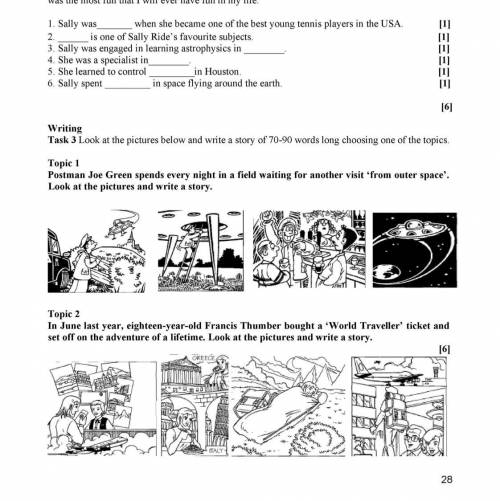
It was afternoon and the streets were empty as I was going back home after school last Friday. Suddenly I heard some noise under the nearest tree. I came up to the tree and saw a small puppy! He was clean and so pretty that I couldn't help smiling. Of couse, I took this little miracle with me. It was a present for my small sister.
Это было днем, и улицы были пусты, как я возвращалась домой после школы в пятницу. Вдруг я услышала какой-то шум под ближайшим деревом. Я подошла к дереву и увидела маленького щенка! Он был чистый и такли хорошенький, что я не могла удержаться от улыбки. Конечно, я взяла это маленькое чудо со мной. Это был подарок для моей маленькой сестры.
2. When supply is increased, a larger amount (is offered) at a given price.
3. The supply of agricultural products cannot be (increased) within a very short period of time.
4. The aim of the Organization of Petroleum (Exporting) Countries (OPEC) (founded) in 1961 is to maintain a standard price for oil and, if necessary, to limit output. In 1973 the OPEC suddenly (began) to use its influence (raising) the world price of oil so that by the end of 1974 the price (had risen) three times in most (importing) countries. It (has increased) many times since then.
5. Marginal revenue is the additional revenue (earned) by a producer from selling one more unit of his product.
6. Money supply is the total amount of money (held) by all persons and organizations in a country at a particular time.
7. The revenue (obtained) from selling output depends on the demand.
8. Landless farmers, that is, farmers (owning) no land, have to cultivate land (owned) by others.
9. Economists use the word «capital» for goods not entirely (used) up in the production process, during a particular period. Electricity is not «capital» as it (is used) entirely in the production process.
10. With less risk of a fall of price between the time decisions (are made) and commodities (are sold), producers will use additional inputs.
11. Supply (depends) on output prices and input prices. An increase in the price of an input (results) in a reduced use of that input. A reduction in the price of an output (has) the same effect as an increase in the price of input, that is, a reduced use of input. The input use (won't change), provided output and input prices (rise) or (fall) by an equal percentage. Thus, the effect on output of a decrease in product prices (can be neutralized) by an equal percentage decrease in input prices. Sometimes the prices of inputs and outputs (change) together. For example, a fall of livestock product prices (reduces) the demand for feed grains. This (leads) to a fall in the price of feeds, that is, the price of inputs.